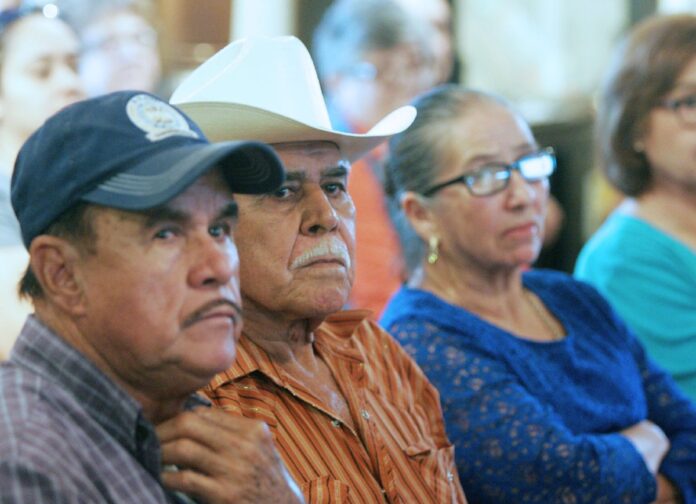A federal judge could rule as early as this week on whether the government violated environmental laws in its push to build border walls along the U.S.-Mexico border, according to a news release.
Last Friday in San Diego, attorneys for the Center for Biological Diversity and those representing the federal government stood before U.S. District Judge Gonzalez Curiel to make arguments in a lawsuit the center originally filed in June 2017 against the U.S. Department of Homeland Security and U.S. Customs and Border Protection.
The lawsuit, which Curiel consolidated from three and includes similar challenges from the state of California and other environmentalist groups, accused DHS and CBP officials of illegally bypassing several environmental laws to build border walls along the border, specifically in San Diego and in New Mexico. This as the Trump administration continues its push to make his campaign promise a reality.
Just last month, in addition to the waivers it had issued in San Diego, DHS announced it had issued more than 30 waivers to bypass environmental laws in eastern New Mexico, stating it was “an area of high illegal entry,” according to the agency’s website.
The waiver would allow for construction in a 20-mile area of New Mexico’s border with Mexico, beginning at the Santa Teresa port of entry and extending westward, according to DHS.
The lawsuit challenges the Trump administration’s use of a long-expired waiver to build replacement walls and prototypes south of San Diego without having to comply with laws that protect clean air, clean water, public lands and endangered wildlife, Brian Segee, an attorney at the center who argued the case, said.
The waivers would speed construction of replacement walls, 30-foot-high prototypes, roads, lighting and other infrastructure without analysis of the environmental impacts or public input. This coastal area of south San Diego is surrounded by communities and contains critical habitat for several endangered species, the center’s release states.
The lawsuit states that the waiver authority, granted in 2006, is no longer valid and is an unconstitutional delegation of power to the Department of Homeland Security, according to court records.
“The Trump administration can’t use an expired waiver to bypass crucial environmental protections to build these destructive projects,” Segee said. “It’s time to stop Trump’s hateful bombast and his executive overreach here in San Diego, before it goes any further. The law and the Constitution are firmly on our side, and we think the judge will agree.”
Scott Nicol, a local activist and executive member of the Sierra Club, also confirmed in September 2017 that his group, along with the Defenders of Wildlife, and the Animal Legal Defense Fund, filed a similar lawsuit on Sept. 14 of that year against the acting secretary of the U.S. Department of Homeland Security, and U.S. Customs and Border Protection.
Like the suit filed by the center, the lawsuit filed by Sierra Club, the Defenders of Wildlife and the Animal Legal Defense Fund is based on a challenge to the constitutionality of the government’s waivers.
Local environmentalists have said the outcome of these legal challenges could have an impact on wall construction in the Valley if and when federal government officials begin such plans, which may be sooner than later.
The potential ruling also comes at a time when construction efforts continue to move forward in the Valley — this after a pre-solicitation notice was published Friday by the government on a federal website, making potential vendors aware that a contract for a levee wall project in Alamo set at between $25 million and $100 million would be up for bid on Feb. 25.
The bid would be for a project that consists of about 3 miles of levee wall fencing in Alamo, which is home to the Santa Ana National Wildlife Refuge.
Considered a treasured environmentally sensitive area, the more than 2,000-acre refuge is home to unique plants, birds and other endangered wildlife; draws more than 165,000 visitors annually, according to a 2011 ecotourism study.
Paulo Lopes, a public lands policy specialist with the center, said during the hearing the judge asked the government about the consultation requirement since the federal government has not yet consulted the stakeholders of the communities located near the border wall’s proposed sites.
“Curiel asked the government about the timing of the consultation and if the consultation should occur at the front (end), so as to know which laws to waive, as opposed to the back (end), when the government is ready to break ground,” he said.
Lopes said the 2008 Appropriations Act added a new consultation requirement to the Illegal Immigration Reform and Immigrant Responsibility Act of 1996 that directs DHS to consult with a host of government agencies and property owners to minimize impact on the environment.
“DHS shall consult with the Secretary of the Interior, the Secretary of Agriculture, states, local governments, Indian tribes, and property owners in the United States to minimize the impact on the environment, culture, commerce and quality of life for the communities and residents located near the sites where border barriers are constructed,” Lopes said.
He said the judge asked both sides to provide additional briefing regarding the consultation requirement under the IIRIRA by Tuesday.
“We look forward to the opportunity to further address Curiel’s questions regarding the consultation provision,” Lopes said.
Curiel’s decision, which is expected sometime after Tuesday, will determine whether Trump can waive these environmental laws and begin the construction of new border walls.





